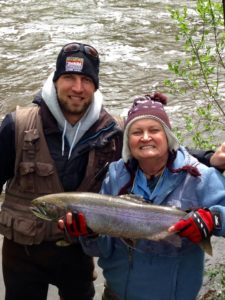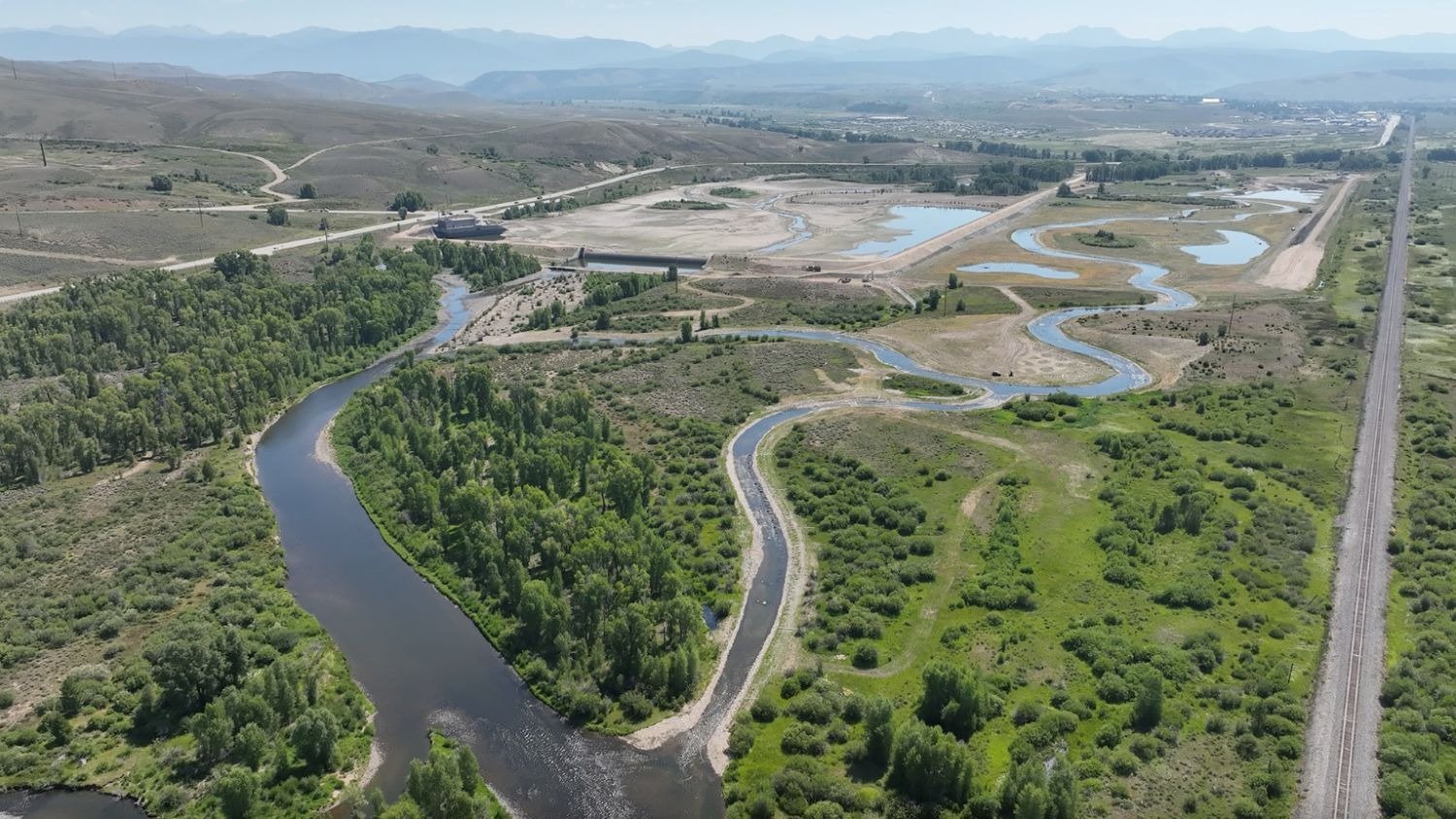Behind the Fin: Marge Vorndam
How long have you been a TU member? Since 1987. I joined the Cheyenne Mountain Chapter of Trout Unlimited when I lived in Colorado Springs. I was on the Board there as Communications Chairman/Newsletter Editor (before e-mail and computers, we sent out paste-up hard copies every month) and helped with fundraising and projects with everyone there.
 After moving South in the early 1990s I transferred to the Southern Colorado Greenback Chapter of TU. After several years, I was on the Board again, serving mainly in the capacity of Communications Chairman. I will be retiring this year, but plan on maintaining an active role in the chapter. Hubby Paul and I are Life Members, and proud of that.
After moving South in the early 1990s I transferred to the Southern Colorado Greenback Chapter of TU. After several years, I was on the Board again, serving mainly in the capacity of Communications Chairman. I will be retiring this year, but plan on maintaining an active role in the chapter. Hubby Paul and I are Life Members, and proud of that.
Why did you become a member and what chapter are you involved with?
My Master’s degree is Environmental Studies. Back when I joined TU, my personal interest was to see improvement in and preservation of water quality health across our landscape. The then-NTU mission was directed to that same theme. NTU decided to change its mission several years ago to focus more on cold-water fisheries, but since I love to fish, it wasn’t a tough choice to stay with TU’s stance on fisheries and watershed conservation and water quality improvement.
What made you want to become involved with TU?
At the time that I chose to join and support organizations with a mission like my interests, TU was front and center! I embraced their overall action agenda, and still can buy into it as foremost of the conservation organization on my list.
What is your favorite activity or project that you have done with TU?
 Kids’ education. Several years ago, Jenny Kedward from the local Sierra Club, Pat McGraw, then-President of our Chapter, and I collaborated to do a two-day summer camp program for 12-14 year olds in our community that concentrated on water education and fishing. We conducted it for four years in a row. Our chapter’s Frostbite Fish-Off Tourney, held for several years, is a close second.
Kids’ education. Several years ago, Jenny Kedward from the local Sierra Club, Pat McGraw, then-President of our Chapter, and I collaborated to do a two-day summer camp program for 12-14 year olds in our community that concentrated on water education and fishing. We conducted it for four years in a row. Our chapter’s Frostbite Fish-Off Tourney, held for several years, is a close second.
I know you won’t tell me your top spot, so what is your second favorite fishing spot or favorite fishing story?
Lake Michigan and Michigan Rivers remain a favorite destination of mine, with my uber-fishing nephew, Kevin Dieleman. He takes me fishing for the BIG fish every time that I’m in MI. While big-fish fishing is a super-charged experience, I really appreciate the fly-fishing scene in Colorado anywhere.
What does being a part of TU mean to you?
It’s an ultimate experience in helping to preserve the water resource. With a growing human population, more attention must be focused on water and how it is used and abused. I appreciate what I can do to facilitate that experience for future generations. I was really proud to be part of the development of Colorado’s Water Plan for our area.
What else do you do in your spare time or for work?
I teach online courses for students at various colleges in Colorado and elsewhere related to Environmental Science. It’s an integral part of what is important to me – getting students excited about what we all can do to support a better world for now and into the future. Additionally, I am a Colorado Master Gardener and a Colorado Native Plant Master, both of which further my educational goals






 But there is one scenario where tenkara rods really shine, and that is for winter tailwater fishing. Colorado is home to many productive winter fisheries, most located below big dams. Tailwaters include the Blue River below Dillon Reservoir, the Frying Pan below Ruedi, the Yampa below Stagecoach, and the Taylor, to name a few. What these waters have in common is a steady flow of (relatively) warm water flowing all winter that is conducive to insect hatches, and in turn to feeding fish. Waters like this are justifiably famous for the big trout they produce, but fishing them during the high season usually means casting right beside many others doing the same thing. The nice thing about visiting them in the winter when everyone else is on the slopes, or inside nice and warm and dreaming of April, is that you can often have these normally busy waters all to yourself.
But there is one scenario where tenkara rods really shine, and that is for winter tailwater fishing. Colorado is home to many productive winter fisheries, most located below big dams. Tailwaters include the Blue River below Dillon Reservoir, the Frying Pan below Ruedi, the Yampa below Stagecoach, and the Taylor, to name a few. What these waters have in common is a steady flow of (relatively) warm water flowing all winter that is conducive to insect hatches, and in turn to feeding fish. Waters like this are justifiably famous for the big trout they produce, but fishing them during the high season usually means casting right beside many others doing the same thing. The nice thing about visiting them in the winter when everyone else is on the slopes, or inside nice and warm and dreaming of April, is that you can often have these normally busy waters all to yourself.
